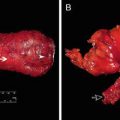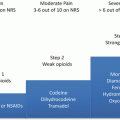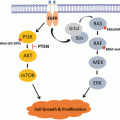Trial
Assigned group
No. of patients
Conversion rate (%)
Operative time (min)
Estimated blood loss (ml)
Lymph node (mean)
CRM + rate (overall, AR, APR) (%)
COLOR II
Laparoscopic
699
16
240
200
13
10/9a/8a
Open
345
–
188
400
14
10/22/25
CLASICC
Laparoscopic
242
34
180
–
8
16/12/20
Open
113
–
135
–
7
14/6/26
COREAN
Laparoscopic
117
1.2
245
200a
17
3/3/5
Open
170
–
197a
218
18
4/3/8
Meta-analyses
Arezzob | Laparoscopic | 1566 | 13 | 219 | 307 | 13.1 | 7.9 |
|---|---|---|---|---|---|---|---|
Open | 1093 | – | 175 | 444 | 14.5 | 6.9 |
Large population-based data, which may provide insight into the generalizability of these procedures, has led to a more confusing picture. A French series based on 22,359 laparoscopic procedures in 62,165 open resections revealed significantly lower mortality rates after laparoscopy (2 vs. 6%) [29]. This finding remained positive after multivariate analysis (OR 0.59; 0.54–0.65) [29]. In contrast a German series concluded that open resection would be the preferred approach given the observed worse outcomes in converted laparoscopic patients [30]. Trials like CLASICC have echoed the German series by demonstrating significantly worse overall survival in converted patients (open 58.5%, laparoscopic 62.4%, converted 49.6% p = 0.005) [19]. Other challenges for the approach include longer operative time and higher costs [1]. Alternatively, other series have lent credibility and support to widespread adoption of these less invasive procedures. For one, laparoscopy appears to benefit the frailest in society undergoing surgery. Stocchi [31] and colleagues found lower rates of morbidity, decreased narcotic use, shorter length of stay, and lower rates of postoperative ileus in elderly patients undergoing laparoscopic colectomy. Moreover, these elderly patients had higher independence after their surgery [31]. Other authors have demonstrated similar short-term benefits in elderly patients [32–35].
Oncologic Markers
Surrogate measures of oncologic outcome have been the currency by which most series have measured initial success. To date nearly every series has consistently demonstrated equivalent outcomes in this regard. In the COLOR II trial, the lymph node harvest was found to be equivalent [8]. Potential concerns did arise in the short-term outcomes of the CLASICC trial, which demonstrated positive circumferential radial margins occurring in 12% of laparoscopic anterior resection versus 6% of open resection [24, 36]. These differences did not reach statistical significance and have not led to any long-term difference in local recurrence [19]. Even more interesting and potentially profoundly positive for laparoscopy were the findings of the CLASICC trial, which demonstrated overall rates of TME that were actually better in the laparoscopic group (77 versus 66%) [20]. Likewise, in contrast to CLASICC’s CRM findings, the COLOR II trial demonstrated a lower CRM positivity rate in laparoscopic surgery , specifically for the subgroup of distal rectal cancers (22 vs. 9%, P = 0.014) [8]. This benefit of laparoscopy may have been confounded in the COLOR trial by the exclusion of T4 tumors and T3 tumors, which were within 2 mm of the endopelvic fascia [8]. More recent randomized studies included patients with rectal cancer after completion of neoadjuvant chemoradiotherapy. The COREAN trial [21, 37] as an example evaluated 170 patients per arm and found no difference in circumferential margin positivity. Rates for CRM positivity ranged from 4.1% for open to 2.9% for laparoscopic resections with no difference in complete mesorectal resection across the board. These rates of CRM positivity are much lower than the earlier RCT with rates ranging from 6 to 26% depending on the type of operation and location of tumor (anterior resection vs. abdominoperineal) [8, 24]. Two smaller randomized controlled trials found CRM positivity rates of 2.6–4% in the laparoscopic arms [38, 39]. Over the years there have been several single-center randomized controlled trials of limited size and scope, which have demonstrated comparable lymph node harvest, circumferential resection margin positivity rate, and distal margin in both techniques [38–42]. Together these randomized controlled data suggest that short-term outcomes are no different between approaches.
Nonrandomized, systemic reviews and meta-analysis have found similar equivalence between approaches . Aziz et al. [27] meta-analysis demonstrated no difference in CRM between laparoscopic and open surgeries. A meta-analysis from Anderson [43] incorporating 17 different trials did find a small but significant difference in lymph nodes between laparoscopic (mean = 10) and open (m = 11) surgery. This difference did not translate into any significant difference in proximal/distal or radial margin [43]. A 2014 meta-analysis by Arezzo et al. [2] included eight randomized controlled trials (2659 patients) and 19 prospective or retrospective studies (8202 patients) in which they reported their results. Their outcome endpoints were un-phased by surgical technique with CRM positive rates of 10.3% lap and 11.6% open, and TME completeness was 85% overall (85% lap and 86% open) for those tumors within 12 cm of the anal verge. Two large meta-analyses of randomized controlled laparoscopic versus open colorectal cancer trials found no difference in total lymph node count. This included lymph node counts for both colon and rectal cancers when evaluated independently [44, 45].
Lujan et al. [46] multicenter series involving more than 4970 patients showed no statistical difference in TME rates, circumferential margins, or number of lymph nodes. Multiple individual series have demonstrated no difference in lymph node count when comparing techniques [42, 47–49]. A retrospective review of 579 patients following laparoscopic proctectomy showed a CRM positivity rate of 2% [47]. Other recent series have actually suggested that MIS may be an improvement over open approaches. Several series have demonstrated better total mesorectal excision (TME) in those undergoing laparoscopic approach [46, 50]. Moreover, these lower rates of positive resection margin in laparoscopic surgery have been discovered as an improving trend over time in a systemic review of laparoscopic rectal cancer including 97 studies [51].
One particularly controversial and historically challenging technical and oncological issue has been in the surgical treatment of the most distal rectal cancers. Historically over the last 30 years, the issue of abdominoperineal resection and its oncologic outcomes has been debated in earnest. It remains an interesting fact that the three large randomized controlled trials, the CLASICC, COREAN, and COLOR trials, have demonstrated a consistently lower rate of positive circumferential margins in the laparoscopic group [8, 24, 37]. It is uncertain whether improvements in overall surgical technique or the laparoscopic approach itself has been the inciting event for this improvement. Recent meta-analysis of three randomized trials and five nonrandomized studies demonstrated significantly lower local recurrence rate (OR 2.73; 95% CI 1.137–6.548) and distant recurrence rate (OR 1.994; 95% CI 1.062–3.742) [22] after laparoscopic APR compared to an open surgery [52]. Historical dogma may be challenged by these intriguing yet controversial findings. In conclusion, this robust short-term data should provide surgeons confidence that laparoscopic surgery for rectal cancer is a safe operation .
Recovery Pathways
The importance of postoperative pathways in the recovery profile and complication risk of surgical patients cannot be understated [53]. In our institution this is achieved by effectively coordinating minimally invasive approach with best practice enhanced recovery pathway (ERP) principles [54]. Enhanced recovery pathways include multimodal pre-, intra-, and postoperative elements, which place the patient in a more normal physiologically state. Multiple randomized controlled trials of demonstrated improvements in not only length of stay but complications as well [55]. The LAFL trial [56] specifically demonstrated the shortest length of hospital stay in those patients undergoing laparoscopic surgery in combination with an enhanced recovery pathway [57, 58]. By optimizing postoperative pain control, postoperative nausea, euvolemic state, and early feeding, one can effectively combine modern surgical techniques with best practice process [53, 59–61].
Long Term
Oncologic Outcomes
Level 1 long-term oncologic outcomes in rectal cancer have not fully matured to date. Although the safety of the technique has been demonstrated by multiple randomized trials [8, 19–21, 24, 37], the long-term oncologic outcomes have limited results to report.
Two large multicenter randomized controlled trials have demonstrated 3- to 5-year oncological results [19, 21]. The first of such trials includes the CLASICC trial, which demonstrated no difference in 5-year oncologic disease-free survival outcomes in its 794 patients [19]. This study had a significant proportion of patients with T3 disease (63%) and N-positive disease (34%) [19, 24, 36]. Surgery is a local therapy; therefore it is important to note that local recurrence rates were also comparable [19]. This may be surprising given the fact that laparoscopic anterior resection group had a nonsignificant difference in radial margin positivity of 12 vs. 6% compared to open anterior resection. Despite this finding it did not translate into a statistically significant adverse local recurrence rate at either 3 years (9.7 versus 10.1%) or at 5 years (17.7% for laparoscopic vs. 8.9% for open) [36, 62]. The COREAN trial, which evaluated rectal cancers after neoadjuvant chemoradiation therapy, has reported 3-year results [21, 37]. Three-year disease-free survival was 79.2% (95% CI 72.3–84.6) in patients undergoing laparoscopic surgery and 72.5% (65.0–78.6; p = 0.0001) in those undergoing open surgery. Three-year overall survival was also equal between treatment arms (90.4% [95% CI 84.9–94.0] vs. 91.7% [86.3–95.0]). Likewise local recurrence-free survival was no different at 3 years (90.4% [95% CI 84.9–94.0] vs. 91.7% [86.3–95.0]) (Table 9.2).
Table 9.2
Long-term outcomes for laparoscopic versus open resection of rectal cancer in major randomized trials and meta-analyses
Trial | Assigned group | No. of patients | Local recurrence rates (%), overall/anterior rsxn/APR | Disease-free survival (%) | Overall survival (%) |
|---|---|---|---|---|---|
CLASICC | Laparoscopic | 253 | −/9.4/− | 53 | 60 |
Open | 128 | −/7.6/− | 52 | 53 | |
COREANa | Laparoscopic | 170 | 2.6 | 72.5 | 91.7 |
Open | 170 | 4.9 | 79.2 | 90.4 | |
Meta-analyses | |||||
Arezzob | Laparoscopic | 1566 | 4.1 | – | – |
|---|---|---|---|---|---|
Open | 1093 | 5.0 | – | – |
The limited data regarding long-term outcomes in large randomized controlled trials can be contrasted to the large volume of single-institutional randomized and nonrandomized data. Long-term oncologic outcomes for rectal cancer have been determined in a meta-analysis including six randomized controlled trials with 1033 patients to be unaffected by approach [63]. Ng et al. [38] demonstrated no oncological difference even after 10 years of follow-up. A 2014 meta-analysis by Arezzo et al. [2] included eight randomized controlled trials (2659 patients) and 19 prospective or retrospective studies (8202 patients). Local recurrence was 3.5 and 5.6% for laparoscopic and open surgery patients with cancers within 12 cm of the anal verge. In addition, there have been multiple prospective trials incorporating 886 patients, which showed no difference in disease-free or overall survival between laparoscopic and open surgery. These trials’ follow-up ranged between 37 and 113 months [36, 42, 64–66]. Moreover, multiple single-center trials demonstrate comparable 5-year local recurrence rates, disease-free survival, and overall survival [38–42]. Current ongoing large randomized controlled trials, the Australasian Laparoscopic Cancer of the Rectum Trial, the American College of Surgeons Oncology Group Z6051 trial, and the Japan Clinical Oncology Group (JCOG0404) trials, are awaiting completion and long-term follow-up.
Beyond the technique of laparoscopic surgery , it must be recognized that the individuals who perform these operations across the various medical centers in the USA impact care. Although sphincter preservation is high on the list of preferred outcomes for rectal cancer , it has been shown in a large population-based series [67] (8219 cases) that those patients having an elective proctectomy by colorectal surgeons obtained higher sphincter preservation rates as compared to those operated by general surgeons (OR = 1.42; P = 0.018). Even more important are the higher cancer-free 5-year survival rate when the operation is performed by a colorectal surgeon (HR = 1.5; P = 0.03) [68]. A retrospective study [69] with 384 consecutive rectal cancer patients resulted in significant survival advantage when operated on by a colorectal surgeon. After a multivariate analysis, the 5-year survival was 77 versus 68% for the patients operated by general surgeons. Here too local control was improved as well as sphincter preservation. In addition, a recent review and meta-analysis [70] demonstrated that colorectal surgeons were able to accomplish proper cancer operations with a lower rate of permanent ostomy (RR = 0.7; 95% CI, 0.53–0.94). Collectively these issues suggest that there is additional long-term data required to make a definitive conclusion. Moreover, if one is to undergo an MIS approach to rectal cancer , it should be performed in a high-volume center by an experienced colorectal surgeon .
Costs
The economic impact of surgical technique is difficult to fully elucidate. The literature is mired in contradictory reports with heterogeneous patient cohorts with difficult to interpret conclusions. Jensen’s meta-analysis using data for randomized controlled trials suggested that laparoscopic surgery was indeed a net savings of more than $4283 per patient with no difference in quality-adjusted life years [71]. However others have suggested laparoscopy due to its higher inventory expenses in the operating room lead to higher overall costs. A Cochrane review of 48 studies (4224 patients) demonstrated higher overall costs in laparoscopic TME [1]. Other systemic reviews from the UK’s NICE [72] demonstrated higher overall costs and laparoscopic surgery of colorectal cancer due to longer operative times and inventory expense. It was noted that shorter hospital stays and reduced morbidity may compensate for these higher operative costs. Other more recent reports suggest that laparoscopy may ultimately be more cost-effective [73–75].
Patient-Related Concerns
For patients the long-term functional consequences of control, frequency, and sexual and urinary dysfunction dominate the debate over approach for rectal cancer . The gastrointestinal functional consequences of low anterior resection can be significant. With a loss of the rectal reservoir, patients may experience the so-called anterior resection syndrome (soiling, urgency, frequency). It is widely recognized that the functional outcomes of intra-sphincteric resection as an extreme example (ISR) are suboptimal with more than 50% of patients maintaining fecal continents at 2 years [76, 77]. Therefore, the GI consequences of rectal surgery must be considered to assure patients are well informed prior to surgery.
There has been no shortage of controversy related to the sexual function of patients undergoing pelvic surgery. The autonomic plexus to avoid includes the superior hypogastric plexus (SHP) (sympathetic), the inferior hypogastric plexus (IHP) (mixed), and the pelvic splanchnic nerves (PSN) (parasympathetic) [78]. This controversy has been renewed by the use of minimally invasive surgery . Despite surgeon efforts to identify and preserve nerves during open TME, the incidence of bladder and sexual dysfunction ranges from 0 to 12% and 10 to 35% of patients, respectively [79]. Kim et al. [80] studied sexual dysfunction risk prospectively in 68 men undergoing rectal cancer surgery. In this study 6% of patients could not successfully obtain or maintain an erection, and 13% experienced retrograde ejaculation postoperatively [80]. Therefore, even in open surgery, these functional impairments can be significant, and it leads surgeons to question whether MIS could possibly improve these well-known risks.
The answer to this question has only recently become available in large level 1 trial. Jayne et al. used the international prostate symptom score (I-PSS) , the International Index of Erectile Function (IIEF) , and the female sexual function index (FSFI) to evaluate patients [62]. The MRC CLASICC trial reported on sexual function with a trend toward worse sexual function and erectile function in men after laparoscopic rectal surgery (41% in lap, 23% in open; P > 0.05) [62]. This finding was similar in the female population with 28% of laparoscopic patients experiencing decreased sexual function (vaginal dryness during intercourse or pain) vs. 17% in the open group. The authors of CLASICC conclude that this may have been influenced by the learning curve [62] given the 34% conversion rate in this cohort. The recent COREAN trial with much lower conversion rates demonstrated no differences in male sexual function in its two arms [37].
Two small series actively investigated ejaculatory dysfunction after laparoscopic surgery and found no significant difference in dysfunction after either procedure (pooled OR 0.59; 95% CI 0.01 to 32.75; Z = 0.26; p = 0.79) [81, 82]. Likewise there were no differences in erectile dysfunction (pooled OR 1.30; 95% CI 0.02–69.13; Z = 0.13; p = 0.90) [79]. Five series have evaluated females specifically for postoperative sexual dysfunction [62, 81–84]. Overall these series have demonstrated similar risks. A systematic review identified three additional nonrandomized trials reporting sexual function after minimally invasive pelvic surgery demonstrating better sexual function in the laparoscopic arms [37]. McGlone [84] et al. used the female sexual function index and found better outcomes in women’s libido in the laparoscopic group as well as lubrication, orgasm, and dyspareunia after surgery [85]. Given this mix of data, it is likely that MIS provides neither an advantage nor disadvantage to sexual function.
Urinary dysfunction is another long-term potential issue after pelvic surgery. The CLASICC trial [62] reported equivalence for bladder dysfunction with the most common compliant being weak stream. The COLOR II [8] and COREAN trial [37] used the QLQ–CR38 to evaluate micturition problems. Both trials found significantly less issues in patients who underwent laparoscopic surgery [8, 37]. Four studies have reported no significant differences and urinary function after laparoscopic approaches to pelvic tumors [81–84]. In fact, Yang et al. [83] reported fewer micturition problems at 3–6 and then again at 12–18 months compared to open. In conclusion it appears that there is no distinct advantage of the laparoscopic technique in preserving autonomic function for sexual or urinary complications.
Technical Challenges
The technical challenges of laparoscopic rectal surgery have limited the diffusion of this technique. In the United States, it has been estimated that minimally invasive rectal resection makes up less than 20% of the overall resection practice [17]. In addition high rates of conversion (46.2%) to open surgery persist without any significant recent improvement [17]. For these reasons groups such as the National Comprehensive Cancer Network and the American Society of Colon and Rectal Surgeons continue to recommend laparoscopy for rectal cancer within study protocols or high-volume specialized centers [26].
The technical risks and pitfalls of minimally invasive approaches to rectal cancer can be defined by two basic principles : those of patient and tumor biology and those of intrinsic anatomy. Known patient and tumor risk factors for a laparoscopic conversion in the literature include obesity [86–88], elevated patient age, ASA score, advanced tumor stage, and emergency setting [22]. These patient and tumor factors can lead to the inability to complete cases through a laparoscopic approach. Multiple studies have demonstrated increased complication rates, length of hospital stay, and overall costs associated with conversion [20, 89]. These disappointing trends may be improving as recent series have reported conversion rates that are much lower, ranging from 5 to 8% [90–92]. The impact of conversion must be met with serious consideration as level 1 evidence has suggested increased local recurrence rates and decreased overall survival [33, 74]. The CLASICC trial found significantly lower overall 5-year survival in those with conversion but similar disease-free survival [19]. Similar findings were found in a 10-year retrospective single-institution review of rectal cancer surgery [89]. Alternatively, other recent series with more than 100 laparoscopic rectal resections revealed no negative oncologic consequences with a mean follow-up of 35.8 months [93]. However, even these authors concluded that given the technical challenges and the potential high conversion rates that expert teams should perform minimally invasive approaches to rectal cancer [93].
The type of operation a surgeon can achieve is dependent on the tumor characteristics. General tumors, which involve the anal canal or pelvic floor musculature, are typically best treated with a classical abdominoperineal resection (APR) . Very distal tumors, which are amenable to retaining intestinal continuity, may be treated with techniques such as coloanal anastomosis (CAA) . It is acceptable for tumors located very distantly to have only a 1 cm distal margin based on good evidence that tumor spread beyond 1 cm in only 4–10% of cancers [25]. Such techniques can be completed transanally, with direct visualization and hand-sewn anastomosis. Alternative approaches to reconstruct very low tumors have been described in which the intersphincteric resection (ISR) of either part of or the entire internal anal sphincter muscle in order to obtain appropriate radial margins [76]. Rullier and colleagues recently standardized the surgical treatment of these low tumors proposing a new classification according to degree of sphincter invasion. They used for classifications for these low tumors the following: “Type I (supra-anal tumor): inferior tumor board located more than 1 cm from the anal ring; Type II (juxta-anal tumor): inferior tumor board is located ≤ 1 cm distant from the anal ring; Type III (intra-anal tumor): there is internal sphincter invasion; and Type IV (transanal tumor): when there is external sphincter or levator any muscle invasion” [66, 76]. Type I and type II included partial and complete resection of the internal sphincter muscle. Type IV lesions of course are treated with classical APR resection. In this study more than 404 patients were evaluated with local recurrence rates of 6%, 5%, 9%, and 17%, respectively, for each of the type of resections I–IV (p = 0.186) [76].
The operative techniques needed to successfully complete an operation for rectal cancer are many. For all tumors of the middle and lower third of the rectum, it would be an expectation that total mesorectal excision would be employed [25, 26]. For tumors in the upper third of the rectum, a margin of at least 5 cm should be typical [26, 94]. It is important to note that tumor deposits can be found up to 4 cm beyond the distal tumor within the mesorectum [94, 95]. Radial margins or circumferential resection margin (CRM) is a critical component to rectal cancer surgery and profoundly important as a predictor of local recurrence and survival [25, 96, 97]. Many centers include the quality of the surgical TME as part of their overall cancer quality metrics [25]. The controversy over circumferential margin in APR resection has been significant. However, multiple series have actually shown improvement in APR circumferential margin positivity exclusively within laparoscopic trials [22]. (The important take-home message, when performing an APR resection, includes that need for wide on-block resection of the levator muscles with the rectum and anal canal). The techniques for accomplishing this are multiple , but at least one will be described below.
Achieving vascular control, on-block resection of T4 tumors, and a full and appropriate lymph node dissection can be challenging to even the best technical surgeon. All surgical resections should include proximal vascular ligation at the origin of the main feeding artery [25]. There is little convincing evidence that high ligation of the IMA is required in the setting of no obvious tumor above or proximal to the superior rectal artery [25]. However, in order to achieve a proper tension-free anastomosis, this higher-level dissection may enable additional mesenteric length. It is important to recognize that any clinically suspicious node should be removed including periaortic [25, 26]. It goes without saying that this is a technical challenge. It can be daunting for many surgeons to perform these resections and is certainly more difficult when performing it with an MIS approach. Equally difficult is dealing with adjacent organs involved by T4 cancers. These too require aggressive on-block techniques, to achieve published survival rates of up to 50% at 5 years [25]. These facts must be considered when contemplating a laparoscopic approach for the most complex of rectal cancers .
Stay updated, free articles. Join our Telegram channel

Full access? Get Clinical Tree








